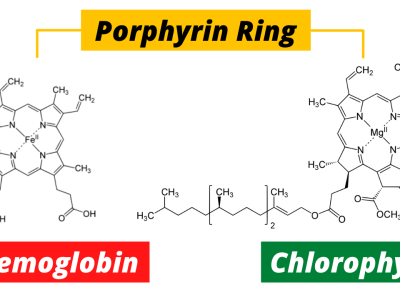Cannabinoid - Things About Cannabinoids

Cannabinoids are group of compounds that interact with Cannabinoidergic and the endocannabinoid system. The most popular of cannabinoids are found in cannabis plants like tetrahydrocannabinol (THC) and Cannabidiol (CBD). At least 114 distinct cannabinoids have been isolated from cannabis. Most cannabinoids are structurally related to THC. Nonclassical cannabinoids or cannabimimetics include aminoalkylindoles, 1,5-diarylpyrazoles, quinolines, and arylsulfonamides as well as eicosanoids. Some other plants that contains cannabinoids are rhododendron, licorice and liverwort.
Read Also About What is Cannabis? All You Need To know About
When were Cannabinoids discovered?
Cannabinol (CBN) was first to discovered by British chemist Robert S. Cahn, in around late 1930s. In 1942, American chemist, Roger Adams, made history when he discovered Cannabidiol (CBD). And in 1963 Israeli professor Raphael Mechoulam later identified the stereochemistry of CBD. The following year, in 1964, Mechoulam and his team identified the stereochemistry of Tetrahydrocannabinol(THC).
What Cannbinoids do? and what are its uses of cannabinoids?
Medical uses include the treatment of nausea due to chemotherapy, spasticity, and possibly neuropathic pain. Common side effects include dizziness, sedation, confusion, dissociation, and feeling high.
Whats are types of Cannabinoid Receptors? what are Cannabinoid receptors?
About Cannabinoid receptors are naturally occuring ligands within human body which act as binder where cannabinoids compounds binds and interact.
There are two types of cannabinoid receptors,
Cannabinoid receptor type 1: CB1 receptors are found primarily in the brain, more specifically in the limbic system and in the basal ganglia, including the hippocampus and the striatum. They are also found in the cerebellum and in both male and female reproductive systems. This receptor is also found in the human anterior eye and retina but are absent in the medulla oblongata, the part of the brain stem responsible for respiratory and cardiovascular functions.
Cannabinoid receptor type 2: CB2 receptors are predominantly found in the immune system, or immune-derived cells with varying expression patterns. While found only in the peripheral nervous system, some report indicates that CB2 is expressed by a subpopulation of microglia in the human cerebellum. CB2 receptors appear to be responsible for immunomodulatory and possibly usable for other therapeutic effects of cannabinoid.
Whats are Common Types of Cannabinoids?
There are three types of cannabinoids, Phytocannabinoids, endocannabinoids and synthetic cannabinoid.
What are Phytocannabinoid?
Cannabinoids sourced from plants are called Phytocannabinoids. Some Common Phytocannabinoids are tetrahydrocannabinol (THC), cannabidiol (CBD) and cannabinol (CBN).
Tetrahydrocannabinol (THC) is the principal psychoactive constituent of cannabis and one of at least 113 total cannabinoids identified on the plant. THC is a lipid found in cannabis assumed to be involved in the plant's evolutionary adaptation, putatively against insect predation, ultraviolet light, and environmental stress. Many people experience a pleasant euphoria and sense of relaxation. Other common effects, which may vary dramatically among different people, include heightened sensory perception (e.g., brighter colors), laughter, altered perception of time, and increased appetite.
Cannabidiol (CBD) is a phytocannabinoid discovered in 1940. It is one of 113 identified cannabinoids in cannabis plants, along with tetrahydrocannabinol (THC), and accounts for up to 40% of the plant's extract. CBD use also carries some risks. Though it's often well-tolerated, CBD can cause side effects, such as dry mouth, diarrhea, reduced appetite, drowsiness and fatigue. CBD can also interact with other medications you're taking, such as blood thinners.
Cannabinol (CBN) is a mildly psychoactive cannabinoid that binds to the cannabinoid receptors with more selectivity for CB2 over CB1 found in trace amounts from Cannabis. CBN is mostly found in cannabis that is aged and stored, and is derived from the plant's main psychoactive chemical, tetrahydrocannabinol (THC).
What are Endocannabinoid? What are types of endocannabinoid ligands?
Cannabinoids that are naturally occur within human body are called Endocannabinoids.
Some Common Endocannabinoids are:
Arachidonoylethanolamine (Anandamide or AEA): Anandamide was the first such compound identified as arachidonoyl ethanolamine. The name is derived from the Sanskrit word for bliss and -amide. It has a pharmacology similar to THC, although its structure is quite different.
2-Arachidonoylglycerol (2-AG): 2-arachidonoylglycerol, binds to both the CB1 and CB2 receptors with similar affinity, acting as a full agonist at both. 2-AG is present at significantly higher concentrations in the brain than anandamide,
2-Arachidonyl glyceryl ether (noladin ether): A third, ether-type endocannabinoid, 2-arachidonyl glyceryl ether (noladin ether), was isolated from porcine brain in 2001. Prior to this discovery, it had been synthesized as a stable analog of 2-AG; indeed, some controversy remains over its classification as an endocannabinoid, as another group failed to detect the substance at "any appreciable amount" in the brains of several different mammalian species. It binds to the CB1 cannabinoid receptor (Ki = 21.2 nmol/L) and causes sedation, hypothermia, intestinal immobility, and mild antinociception in mice. It binds primarily to the CB1 receptor, and only weakly to the CB2 receptor.
N-Arachidonoyl dopamine (NADA): NADA preferentially binds to the CB1 receptor. Like anandamide, NADA is also an agonist for the vanilloid receptor subtype 1 (TRPV1) and was discovered in 2000.
Virodhamine (OAE): A fifth endocannabinoid, virodhamine, or O-arachidonoyl-ethanolamine (OAE), was discovered in June 2002. Although it is a full agonist at CB2 and a partial agonist at CB1, it behaves as a CB1 antagonist in vivo. In rats, virodhamine was found to be present at comparable or slightly lower concentrations than anandamide in the brain, but 2- to 9-fold higher concentrations peripherally.
Lysophosphatidylinositol (LPI): Lysophosphatidylinositol is the endogenous ligand to novel endocannabinoid receptor GPR55, making it a strong contender as the sixth endocannabinoid.
What are Synthetic Cannabinoids?
Initially, lab synthesis of cannabinoids was usually based on the structure of plant based cannabinoids, and a large number of analogs have been produced and tested, especially in a group led by Roger Adams as early as 1941 and later in a group led by Raphael Mechoulam. Newer compounds are no longer related to natural cannabinoids or are based on the structure of the endogenous cannabinoids.
Some Common Synthetic Cannabinoid are:
Dronabinol(Marinol), is Δ9-tetrahydrocannabinol(THC), used as an appetite stimulant, anti-emetic, and analgesic
Nabilone(Cesamet, Canemes), a synthetic cannabinoid and an analog of Marinol. It is Schedule II unlike Marinol, which is Schedule III
Rimonabant, a selective cannabinoid (CB1) receptor inverse agonist once used as an anti-obesity drug under the proprietary name Acomplia. It was also used for smoking cessation
Other common synthetic cannabinoids are:
- JWH-018, a potent synthetic cannabinoid agonist discovered by John W. Huffman at Clemson University. It was often sold in legal smoke blends collectively known as "spice". Several countries and states have moved to ban it legally.
- JWH-073
- CP-55940, produced in 1974, this synthetic cannabinoid receptor agonist is many times more potent than THC.
- Dimethylheptylpyran
- HU-210, about 100 times as potent as THC
- HU-211, a synthetic cannabinoid derived drug that acts on NMDA instead of endocannabinoid system
- HU-331 a potential anti-cancer drug derived from cannabidiol that specifically inhibits topoisomerase II.
- SR144528, a CB2 receptor antagonist/ inverse agonist
- WIN 55,212-2, a potent cannabinoid receptor agonist
- JWH-133, a potent selective CB2 receptor agonist
- Levonantradol (Nantrodolum), an anti-emetic and analgesic but not currently in use in medicine
- AM-2201, a potent cannabinoid receptor agonist









